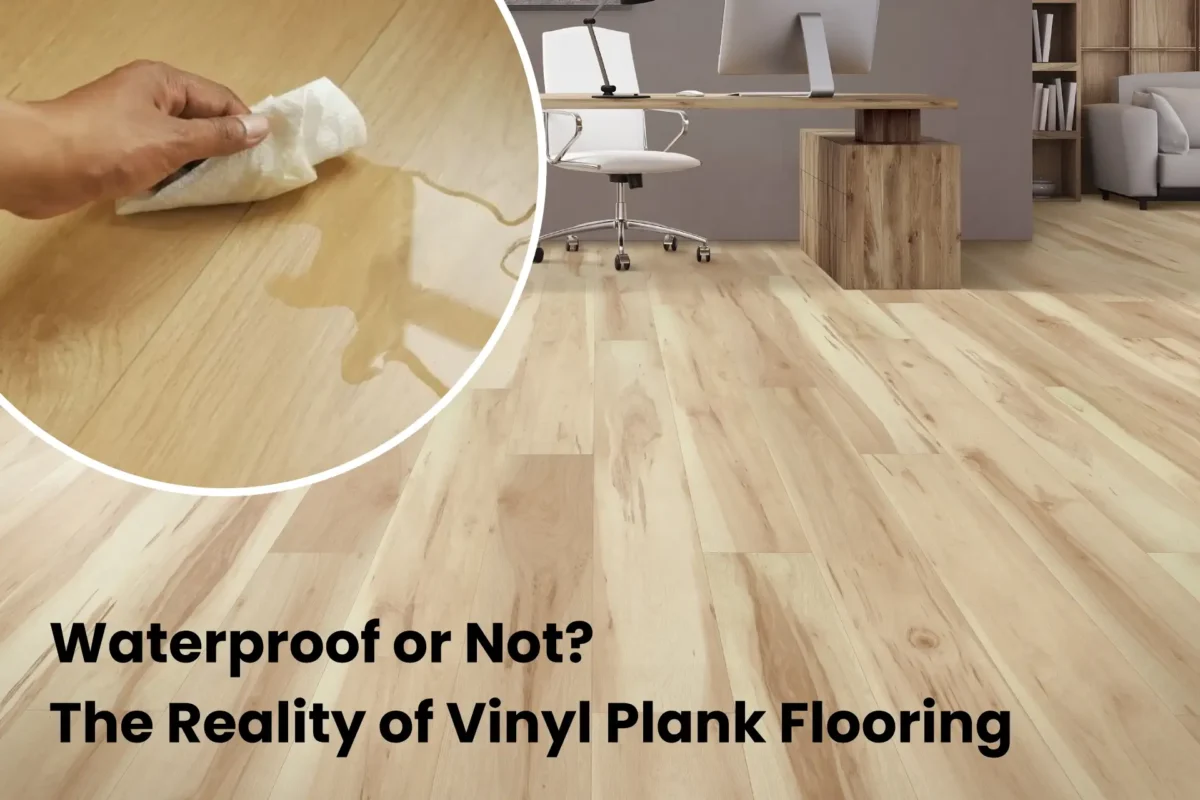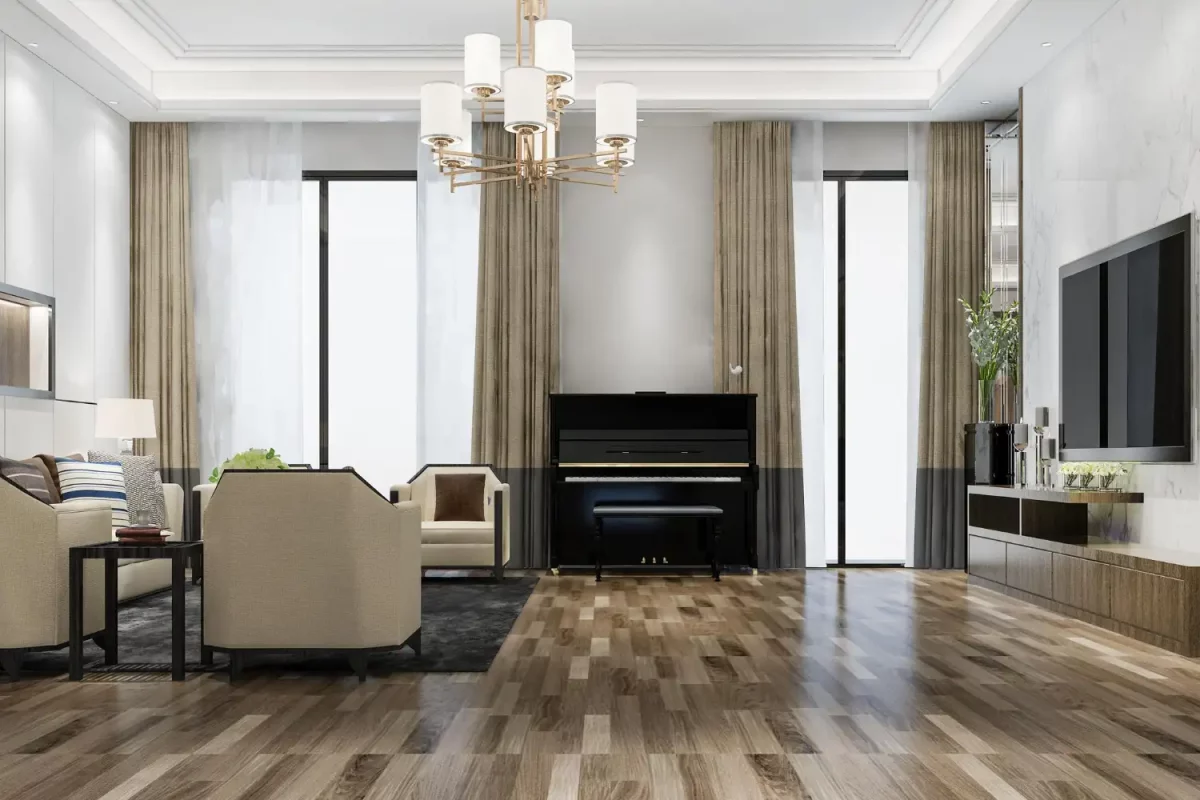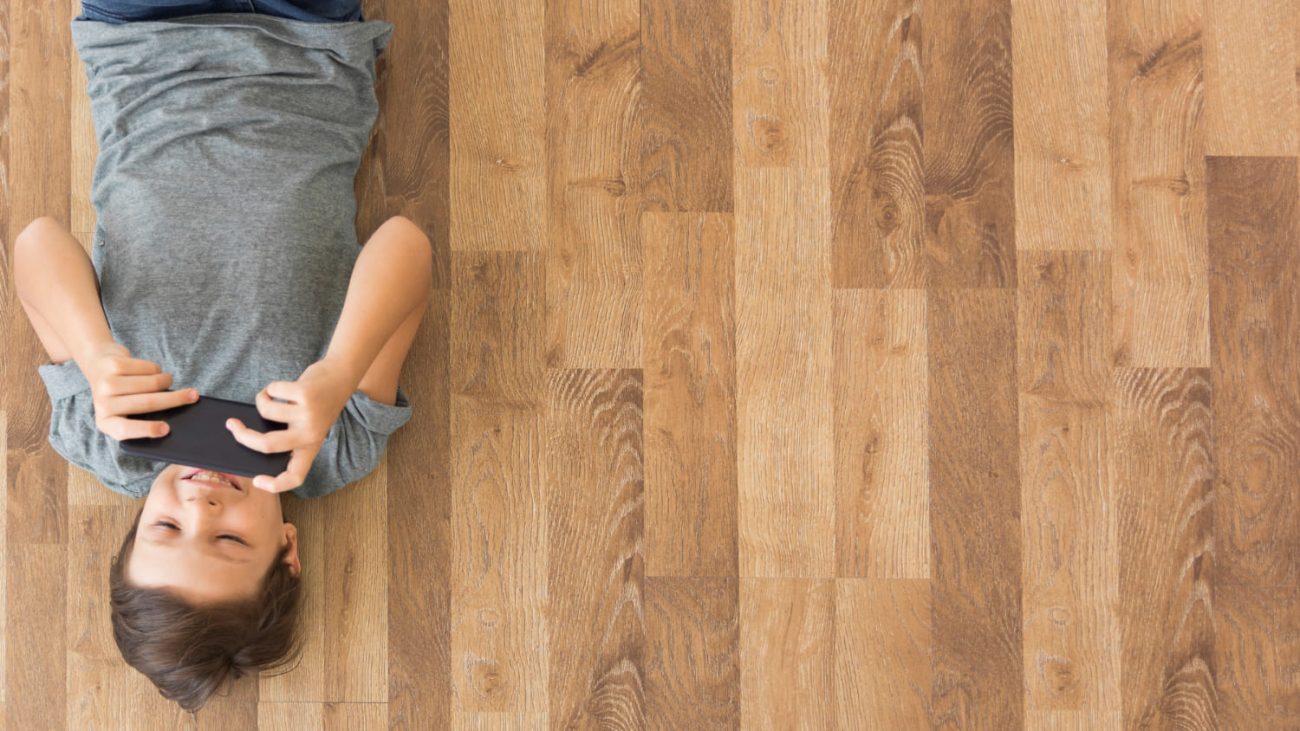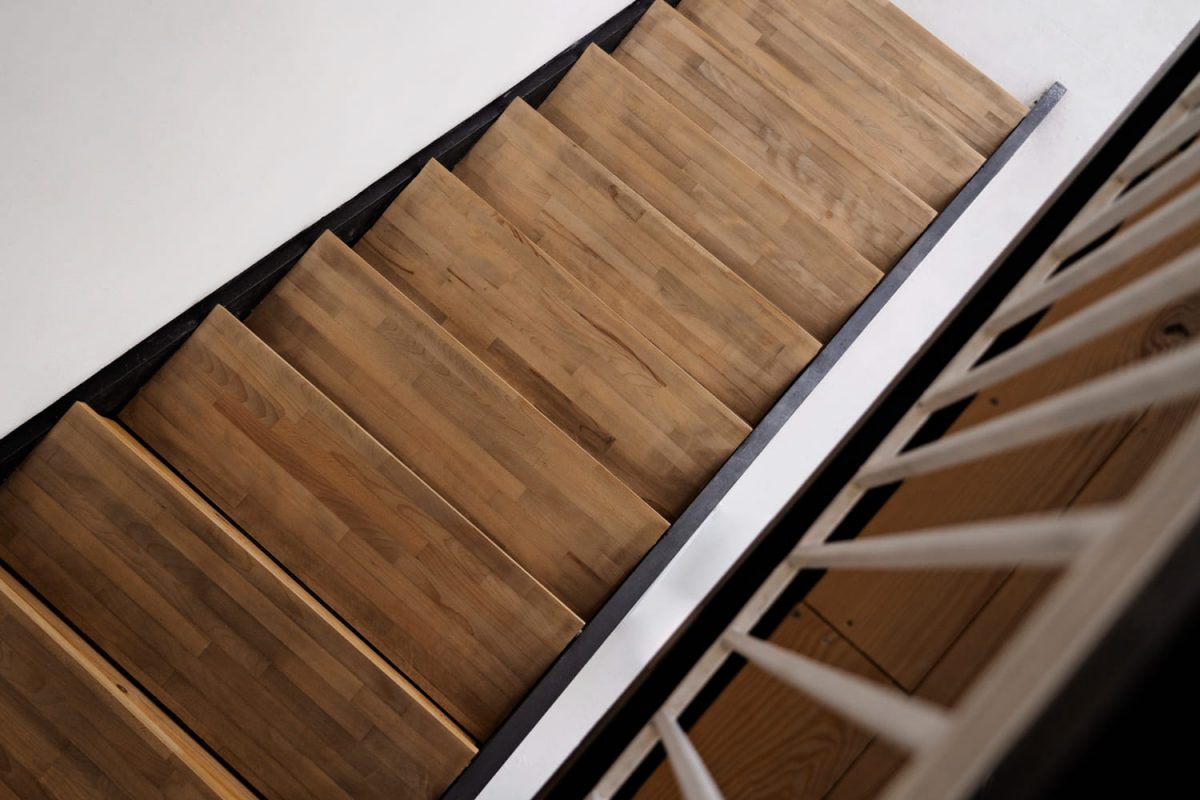Vinyl plank flooring has gained widespread popularity for its versatility, durability, and aesthetic appeal. While it is commonly installed on flat surfaces such as floors, many homeowners are now considering extending this flooring option to their stairs. However, installing vinyl plank flooring on stairs presents unique challenges and considerations that differ from horizontal installations. In this comprehensive guide, we delve into the key factors to consider when contemplating Vinyl Plank Flooring on Stairs Things To Consider.
Material Selection:
-
- When choosing vinyl plank flooring for stairs, opt for products specifically designed for this purpose. Look for options with enhanced durability, slip resistance, and compatibility with stair-nosing profiles.
- Consider the thickness of the vinyl planks, as thinner options may not withstand the heavy foot traffic and impact associated with stair use. Thicker planks offer greater stability and longevity.
Subfloor Preparation:
-
- Proper subfloor preparation is crucial for a successful vinyl plank installation on stairs. Ensure that the subfloor is clean, dry, and level to prevent any irregularities or imperfections from affecting the finished result.
- Remove any existing flooring materials, adhesive residues, or protrusions from the stairs to create a smooth and uniform surface for the vinyl planks.
Stair Nosing and Trim:
-
- Stair nosing profiles play a vital role in both safety and aesthetics when installing vinyl plank flooring on stairs. Choose nosing profiles that are specifically designed to accommodate vinyl planks and provide a secure transition between steps.
- Consider the color and finish of the stair nosing to complement the vinyl plank flooring and create a cohesive look throughout the staircase.
Installation Method:
-
- Select the appropriate installation method based on the type of vinyl plank flooring chosen and the structure of the stairs. Options include glue-down, click-lock, or adhesive-free floating installations.
- Follow the manufacturer’s guidelines and recommendations for stair installations, paying close attention to seam placement, adhesive application, and acclimation requirements.
Safety Considerations:
-
- Safety should be a top priority when installing vinyl plank flooring on stairs. Choose products with slip-resistant surfaces or apply non-slip coatings or adhesives to enhance traction and reduce the risk of accidents.
- Ensure that the stairs comply with building codes and regulations regarding tread depth, riser height, and handrail placement to maintain a safe and comfortable walking environment.
Maintenance and Cleaning:
-
- Vinyl plank flooring on stairs is subjected to heavy foot traffic and may require regular maintenance to preserve its appearance and performance. Sweep or vacuum the stairs regularly to remove dirt, dust, and debris.
- Use a mild detergent or specialized vinyl floor cleaner and a damp mop to clean the stairs periodically. Avoid abrasive cleaners or tools that could scratch or damage the vinyl surface.
Long-Term Durability:
-
- Consider the long-term durability and resilience of the vinyl plank flooring chosen for stairs. Look for products with wear layers designed to withstand abrasion, impact, and fading over time.
- Monitor the condition of the stairs regularly and address any signs of wear, damage, or loosening of the vinyl planks promptly to prevent further deterioration and ensure the longevity of the installation.
Vinyl Plank Flooring on Stairs Things To Consider lists
-
Material Selection:
- Choose vinyl plank flooring specifically designed for use on stairs.
- Opt for durable, slip-resistant options suitable for heavy foot traffic.
-
Subfloor Preparation:
- Ensure the subfloor is clean, dry, and level.
- Remove any existing flooring materials or protrusions.
-
Stair Nosing and Trim:
- Select stair-nosing profiles compatible with vinyl planks.
- Choose nosing colors and finishes that complement the flooring.
-
Installation Method:
- Decide on the appropriate installation method (glue-down, click-lock, or adhesive-free floating).
- Follow manufacturer guidelines for stair installations.
-
Safety Considerations:
- Prioritize safety by choosing slip-resistant vinyl planks.
- Ensure stairs comply with building codes and regulations.
-
Maintenance and Cleaning:
- Establish a regular cleaning routine for the stairs.
- Use mild detergents and avoid abrasive cleaners.
-
Long-Term Durability:
- Select vinyl plank flooring with durable wear layers.
- Monitor the condition of the stairs for signs of wear and damage.
-
Color and Style:
- Consider the aesthetic appeal of the vinyl plank flooring.
- Choose colors and styles that complement the overall design of the space.
-
Compatibility with Staircase Design:
- Ensure vinyl plank flooring is compatible with the staircase design.
- Consider factors such as tread depth and riser height.
-
Budget Considerations:
- Evaluate the cost of materials and installation.
- Balance budget constraints with quality and durability.
-
Underlayment Options:
- Explore underlayment options to enhance comfort and reduce noise.
- Choose underlayment materials compatible with vinyl plank flooring.
-
Moisture Resistance:
- Ensure vinyl plank flooring has adequate moisture resistance.
- Consider moisture barriers or sealants for added protection.
-
Ease of Installation:
- Assess the ease of installation for the chosen vinyl plank flooring.
- Consider DIY vs. professional installation options.
-
Warranty Coverage:
- Review warranty coverage for the vinyl plank flooring.
- Understand warranty terms and conditions for stair installations.
-
Transition to Other Flooring Surfaces:
- Plan for transitions between vinyl plank flooring on stairs and other flooring surfaces.
- Ensure seamless transitions for a cohesive look.
-
Temperature and Climate Considerations:
- Consider temperature and climate factors that may affect vinyl plank flooring.
- Choose materials suitable for temperature fluctuations and humidity levels.
-
Impact Resistance:
- Select vinyl plank flooring with high-impact resistance.
- Assess the flooring’s ability to withstand heavy use and potential impacts.
-
Ease of Repair:
- Evaluate the ease of repairing vinyl plank flooring on stairs.
- Choose products with simple repair solutions for damaged areas.
-
UV Stability:
- Consider UV stability for vinyl plank flooring installed near windows or exposed to sunlight.
- Choose products with UV-resistant properties to prevent fading.
-
Pet-Friendly Features:
- Assess pet-friendly features of vinyl plank flooring.
- Choose options resistant to scratches and stains from pet claws and accidents.
-
Environmental Impact:
- Consider the environmental impact of vinyl plank flooring materials.
- Choose eco-friendly options or products with recycled content.
-
Fire Resistance:
- Evaluate fire resistance ratings for vinyl plank flooring.
- Choose products with adequate fire resistance for safety.
-
Allergen Resistance:
- Consider allergen resistance features of vinyl plank flooring.
- Choose hypoallergenic options suitable for allergy sufferers.
-
Ease of Removal:
- Assess the ease of removing vinyl plank flooring if necessary.
- Choose products that can be removed without causing damage to the subfloor.
-
Staircase Lighting:
- Consider staircase lighting options and their compatibility with vinyl plank flooring.
- Ensure sufficient lighting for safety and visibility.
-
Installation Tools and Equipment:
- Gather necessary tools and equipment for vinyl plank flooring installation.
- Ensure tools are suitable for the chosen installation method.
-
Acoustics and Sound Control:
- Consider the acoustics and sound control properties of vinyl plank flooring.
- Choose options that minimize noise transmission for quiet stairs.
-
Staircase Design Flexibility:
- Evaluate the design flexibility of vinyl plank flooring for stairs.
- Choose options that accommodate various staircase designs and layouts.
-
Accessibility Considerations:
- Consider accessibility features for vinyl plank flooring on stairs.
- Ensure stairs are accessible for individuals with mobility challenges.
-
Material Expansion and Contraction:
- Understand how vinyl plank flooring may expand and contract with temperature changes.
- Plan for expansion gaps and movement allowances during installation.
-
Visual Continuity:
- Maintain visual continuity between vinyl plank flooring on stairs and adjacent areas.
- Choose options that seamlessly blend with surrounding flooring for a cohesive look.
-
Customization Options:
- Explore customization options for vinyl plank flooring.
- Consider custom colors, patterns, and designs to personalize the stairs.
-
Anti-Static Properties:
- Consider the anti-static properties of vinyl plank flooring.
- Choose options that reduce static electricity buildup for safety and comfort.
-
Chemical Resistance:
- Assess the chemical resistance properties of vinyl plank flooring.
- Choose options resistant to common household chemicals and cleaners.
-
Durability Under Heavy Loads:
- Evaluate durability under heavy loads for vinyl plank flooring on stairs.
- Choose options capable of supporting weight without damage or deformation.
-
Installation Timeframe:
- Consider the installation timeframe for vinyl plank flooring on stairs.
- Plan for sufficient time to complete the installation process.
-
Maintenance Accessibility:
- Ensure maintenance accessibility for vinyl plank flooring on stairs.
- Choose options that allow for easy cleaning and upkeep.
-
Environmental Conditions During Installation:
- Consider environmental conditions during vinyl plank flooring installation.
- Ensure suitable temperature and humidity levels for optimal installation results.
-
Impact on Property Value:
- Assess the impact of vinyl plank flooring on stairs on property value.
- Choose options that enhance the overall value and appeal of the home.
-
Consultation with Flooring Professionals:
- Seek advice and consultation from flooring professionals.
- Obtain recommendations and guidance for selecting and installing vinyl plank flooring on stairs.
Conclusion
Vinyl Plank Flooring on Stairs Things To Consider offers a stylish and practical solution for stairs, providing durability, versatility, and ease of maintenance. By considering the factors outlined in this guide, homeowners can make informed decisions and achieve successful installations that enhance the beauty and functionality of their staircases for years to come.







